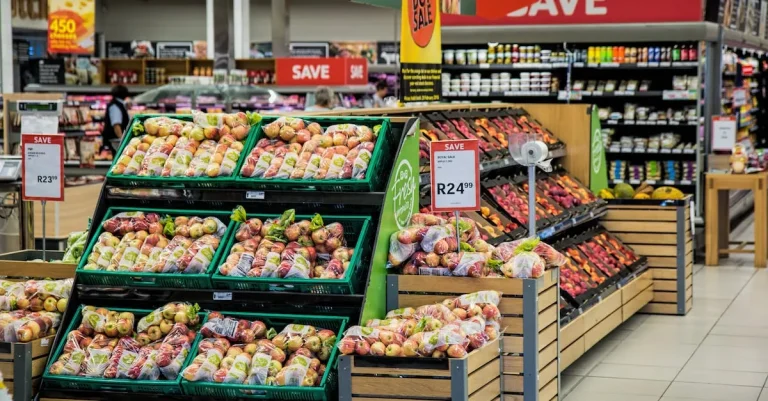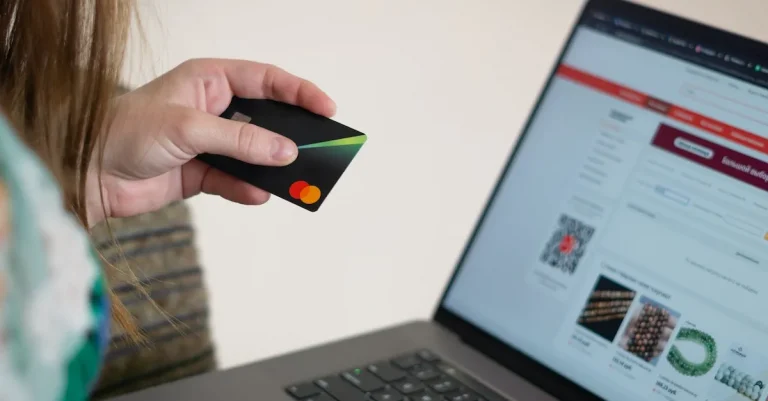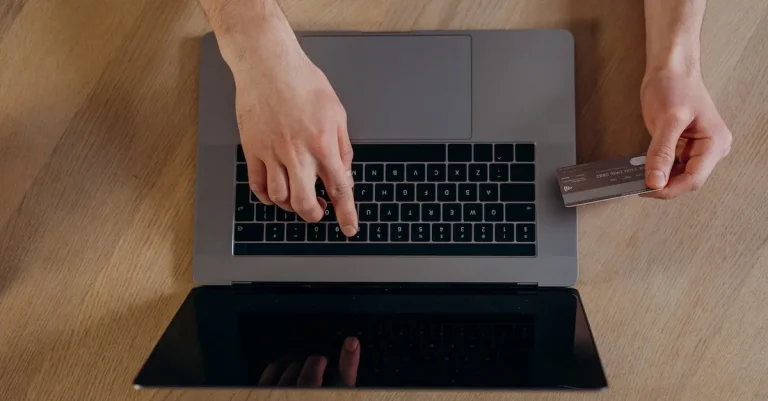How To Turn Your Ebt Benefits Into Cash
If you receive SNAP or cash assistance through Electronic Benefit Transfer (EBT), you may want the freedom of turning those benefits into physical cash. However, there are rules surrounding how EBT cards can be used.
If you’re short on time, here’s a quick answer to your question: The only way to turn EBT funds into cash is to withdraw money directly from an ATM using your EBT card. This only works for cash benefits. SNAP benefits cannot be converted to cash.
In this comprehensive guide, we’ll explain the ins and outs of converting your EBT into cash. We’ll cover EBT card use rules, how to withdraw cash benefits, daily withdrawal limits, potential fees, and more.
EBT Card Usage Rules and Restrictions
Electronic Benefit Transfer (EBT) cards are a convenient way for individuals and families to access government assistance programs such as the Supplemental Nutrition Assistance Program (SNAP). However, there are specific rules and restrictions that govern how these benefits can be used.
It is important to understand these guidelines to make the most of your EBT benefits and avoid any potential issues.
Approved Items
EBT cards can only be used to purchase certain items that are considered essential for daily living.
These include groceries, such as fruits, vegetables, dairy products, meat, and bread. Non-food items, such as cleaning supplies and personal hygiene products, are generally not eligible for purchase with EBT benefits.
It’s worth noting that some states have implemented additional restrictions on what can be purchased with EBT cards. For example, certain luxury items like alcohol, tobacco, and hot prepared foods may be prohibited.
It’s important to familiarize yourself with your state’s specific guidelines to ensure compliance.
Authorized Retailers
EBT benefits can only be used at authorized retailers that have been approved by the government.
These retailers include grocery stores, supermarkets, and farmers’ markets that accept EBT payments. In some cases, certain online retailers may also accept EBT for the purchase of eligible food items.
To find authorized retailers in your area, you can visit the official website of the Supplemental Nutrition Assistance Program (SNAP) or contact your local social services agency. It is essential to ensure that the retailer you choose is authorized to accept EBT to avoid any issues with your benefits.
Prohibited Transactions
There are certain transactions that are strictly prohibited when using an EBT card. These include withdrawing cash from an ATM or using the card to pay for non-essential items or services.
EBT benefits are intended to help individuals and families meet their basic needs, so using them for inappropriate purposes is a violation of the program’s rules.
It’s important to remember that misuse or abuse of EBT benefits can result in penalties, including the suspension or termination of benefits or cancellation of your EBT eligibility. If you have any questions about what is considered an acceptable use of your EBT card, it is best to contact your local social services agency for clarification.
Keeping Track of Your Balance
One of the challenges of using an EBT card is keeping track of your balance. It is essential to monitor your spending to ensure you do not exceed your available benefits.
Fortunately, most states provide online portals or phone apps that allow you to check your EBT balance easily.
Additionally, it’s a good idea to keep all your receipts and review them regularly to track your spending and ensure that your EBT benefits are being used appropriately. This will help you stay within your budget and make the most of your benefits.
Understanding the rules and restrictions surrounding EBT card usage is crucial for maximizing the benefits and avoiding any potential issues. By familiarizing yourself with the approved items, authorized retailers, prohibited transactions, and ways to track your balance, you can make the most of your EBT benefits and ensure they are used responsibly.
Withdrawing Cash Benefits from ATMs
One of the convenient ways to access your EBT benefits is by withdrawing cash from ATMs. Most states have implemented this feature to provide recipients with easier access to their funds.
Here are some important points to keep in mind when using ATMs to withdraw your cash benefits.
Locating an EBT-friendly ATM
Not all ATMs accept EBT cards, so it’s crucial to find an EBT-friendly ATM near you.
Many major banks and financial institutions offer ATMs that are compatible with EBT cards. You can easily find these ATMs by using the store locator on the website of your state’s EBT program.
Additionally, some grocery stores and convenience stores have ATMs that accept EBT cards.
Understanding ATM Fees
While using an ATM to withdraw your cash benefits is convenient, it’s important to be aware of any fees associated with these transactions.
Some ATMs may charge a fee for EBT withdrawals, especially if they are not affiliated with your state’s EBT program.
Make sure to read the fee disclosure before making a withdrawal to avoid any surprises.
Keeping Your PIN Secure
Your EBT card requires a Personal Identification Number (PIN) to access your benefits.
It’s crucial to keep your PIN secure and not share it with anyone. Memorize your PIN instead of writing it down, and be cautious when entering it at an ATM to prevent others from seeing it.
If you suspect that your PIN has been compromised, contact your state’s EBT customer service immediately to have it changed.
Maximum Withdrawal Limits
Each state has its own rules and regulations regarding the maximum amount you can withdraw from an ATM using your EBT card. It’s important to familiarize yourself with these limits to avoid any surprises.
Some states may have daily or monthly withdrawal limits to prevent misuse of funds.
Checking Your Balance
Before making a withdrawal, it’s always a good idea to check your EBT balance to ensure that you have sufficient funds. Most states provide online portals or mobile apps where you can easily check your balance.
Alternatively, you can call the customer service number on the back of your EBT card to inquire about your balance.
Withdrawing cash benefits from ATMs provides recipients with a convenient way to access their funds. By following these guidelines, you can make the most out of your EBT benefits and ensure a smooth withdrawal process.
Daily Limits on Cash Withdrawals
When it comes to turning your EBT benefits into cash, it’s important to be aware of the daily limits on cash withdrawals.
These limits are in place to ensure the program is used for its intended purpose of providing assistance for essential items rather than being used as a primary source of cash.
Understanding the Limits
The specific daily limits on cash withdrawals can vary depending on the state and the type of benefit you receive. It’s important to check with your state’s Department of Social Services or equivalent agency to find out the exact limits that apply to you.
For example, in California, the daily limit for cash withdrawals from an EBT card is $200. This means that you can withdraw up to $200 in cash per day from ATMs or participating retailers. However, it’s important to note that this limit applies to cash withdrawals only and does not apply to purchases made using your EBT card.
Reasons for the Limits
The daily limits on cash withdrawals are in place for a few reasons.
Firstly, it helps prevent abuse of the program by individuals who may attempt to withdraw large sums of cash for non-essential purposes.
By placing a limit on daily withdrawals, the program can better ensure that the benefits are used for their intended purpose.
Secondly, the limits help protect against fraud and unauthorized use of EBT cards. By setting a maximum daily withdrawal amount, it becomes more difficult for someone to misuse a lost or stolen card.
Alternatives to Cash Withdrawals
If you find that the daily limits on cash withdrawals are not sufficient for your needs, there are alternative ways to access your EBT benefits.
One option is to use your EBT card to make purchases at approved retailers.
This can include grocery stores, farmers’ markets, and other businesses that accept EBT. By using your benefits directly for purchases, you can avoid the need for cash withdrawals altogether.
Additionally, some states offer programs or incentives that allow you to stretch your benefits further.
For example, there may be programs that provide additional funds for purchasing fresh fruits and vegetables or discounts on certain items.
Ultimately, it’s important to understand and respect the daily limits on cash withdrawals when using your EBT benefits. By doing so, you can make the most of your benefits while still ensuring they are used for their intended purpose.
Watch Out for ATM Fees
When it comes to turning your EBT benefits into cash, it’s important to be aware of the potential fees associated with using ATMs.
While using an ATM may seem like a convenient way to access your funds, it’s crucial to choose the right one to avoid unnecessary charges that can eat into your benefits.
Understanding ATM Fees
Many ATMs charge a fee for withdrawing cash, and these fees can vary depending on the location and the network used. It’s essential to read the fine print and understand the terms and conditions of the ATM you are using.
Banks and financial institutions often charge non-customers a fee to use their ATMs. These fees can range from a few dollars to as much as $5 or more per transaction.
Additionally, some ATMs charge an additional fee on top of what your bank or financial institution may charge. These fees can quickly add up and significantly reduce the amount of cash you receive.
How to Avoid ATM Fees
To make the most of your EBT benefits and avoid unnecessary fees, consider the following tips:
- Choose the right ATM: Look for ATMs that are part of your bank or financial institution’s network. These ATMs typically don’t charge additional fees for withdrawals. You can use the ATM locator on your bank’s website or mobile app to find the nearest fee-free ATM.
- Plan ahead: Withdraw larger amounts of cash less frequently to minimize the number of ATM transactions and potential fees.
- Shop smart: Some stores offer cash back options when you make a purchase with your EBT card. Take advantage of this feature to avoid ATM fees altogether.
- Avoid out-of-network ATMs: If you can’t find a fee-free ATM, try to avoid using ATMs that charge additional fees. Look for alternatives, such as getting cash back at a store or using a cash-back app.
Keep Track of Your Transactions
Remember to keep track of your EBT transactions, including ATM withdrawals. Monitoring your balance regularly will help you stay within your budget and avoid any surprises.
By being mindful of ATM fees and following these tips, you can maximize the cash you receive from your EBT benefits and put it to good use.
For more information and resources on managing your EBT benefits, visit the official website of the United States Department of Agriculture’s Food and Nutrition Service: www.fns.usda.gov/snap/ebt.
Using EBT at Point-of-Sale Terminals
Electronic Benefit Transfer (EBT) is a government program that provides assistance to low-income individuals and families by offering them benefits like SNAP (Supplemental Nutrition Assistance Program) and WIC (Women, Infants, and Children) benefits.
These benefits are typically loaded onto an EBT card, which works similarly to a debit card. One of the convenient ways to utilize these benefits is by using them at point-of-sale terminals.
What are point-of-sale terminals?
Point-of-sale (POS) terminals are electronic devices used by merchants to process payments made by customers.
These terminals are equipped to accept different forms of payment, including debit cards, credit cards, and EBT cards.
When using your EBT benefits at a point-of-sale terminal, you can purchase eligible food items and other approved products.
How to use EBT at point-of-sale terminals?
Using your EBT benefits at a point-of-sale terminal is a straightforward process. Here’s a step-by-step guide:
- Locate a store or retailer that accepts EBT. Many grocery stores, supermarkets, and even some farmers’ markets participate in the EBT program.
- Choose the items you want to purchase. Remember that EBT benefits can only be used to buy eligible food items, such as fruits, vegetables, dairy products, and meats.
- Proceed to the checkout counter. Inform the cashier that you will be using your EBT card.
- Swipe or insert your EBT card into the POS terminal. Follow the instructions on the screen, which may include entering your PIN.
- Wait for transaction approval. Once the transaction is approved, the amount of the purchase will be deducted from your EBT balance. If you have insufficient funds, the transaction may be declined.
- Collect your receipt, which will show the remaining balance on your EBT card.
It’s important to note that EBT benefits cannot be used to withdraw cash directly from a point-of-sale terminal.
However, some states offer cash-back programs that allow recipients to get cash from participating retailers after making a purchase with their EBT card.
Benefits of using EBT at point-of-sale terminals
Using your EBT benefits at point-of-sale terminals offers several advantages:
- Convenience: POS terminals are readily available in many stores, making it convenient for EBT cardholders to access their benefits.
- Security: EBT cards use secure PIN numbers, ensuring the safety of your funds.
- Real-time balance: After each transaction, you can immediately see the remaining balance on your EBT card, allowing you to manage your benefits effectively.
For more information on using your EBT benefits at point-of-sale terminals, you can visit the official website of your state’s EBT program.
Conclusion
Turning EBT into cash is possible for cash assistance benefits by withdrawing from ATMs within daily limits. Be aware of potential fees. SNAP food benefits cannot be converted to cash.
Use your EBT card wisely to avoid problems with your assistance provider.











